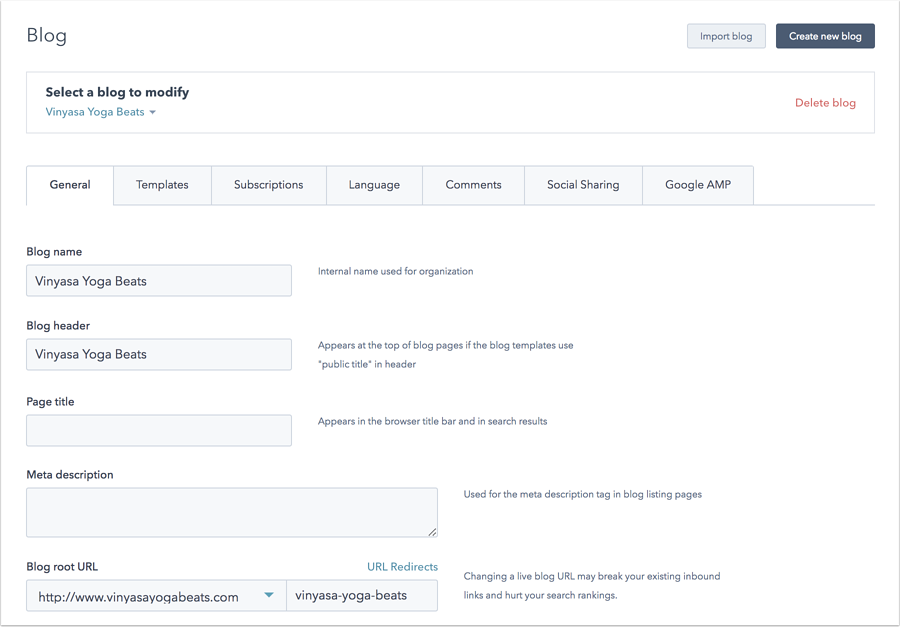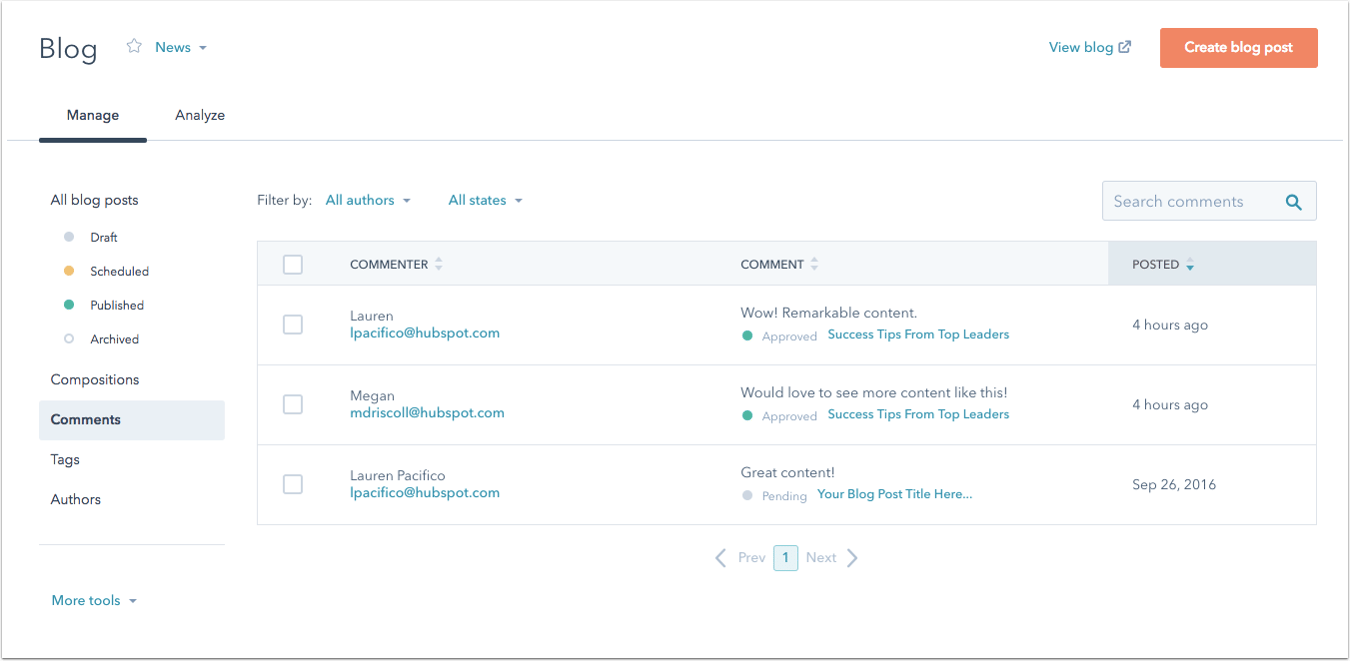A quick tour of the blog tool
Last updated: June 26, 2020
Settings
You can create a new blog or manage your existing blog options in your blog settings. This is where you'll set defaults for your blog root URL, language settings, comments, subscriptions and more.

Posts
You'll create and edit a new blog post in your blog post editor. Each of these posts can be displayed by publish date, by author, or by topic. In addition to the classic editor, HubSpot has a draft mode editor that allows authors to focus on their content without any of the other distractions of their layout.

Listing page
Your individual posts are grouped together into blog listings. You may feature blog posts in order of publish date or sort them by author or blog tag.
You can view your live listing page by clicking View blog at the top of your blog dashboard. The content of your blog's listing page renders dynamically based on your blog's template and blog options in your settings.

Dashboard
Your blog dashboard gives you an overview of all your blog posts and analytics. You can also manage details of your blog such as tags, authors, and settings. The dashboard contains a Manage tab and Analyze tab.
Manage
The Manage section of your blog dashboard provides access to all your blog posts, including drafts, scheduled, published, or archived posts. This is also where you'll create a new blog post.
If you're managing multiple blogs in HubSpot, click the blog name dropdown menu to select a different blog dashboard. Click the star icon favorite to set the selected blog as your primary blog. This will be the default blog dashboard you see when you navigate to your blog tool.
On the sidebar navigation you can also see your comments, tags, and authors. There's a More Tools menu to edit your blog settings, view your subscriber lists, manage your blog template, and more.

Analyze
Click Analyze to see your blog performance. You'll see quick reports of your blog post views and subscribers, as well as the performance of your most recent blog posts.
You can use the filters of each report to look at a different timeframe. Click on any report to look at just the data from that report and even click on the column title to sort by specific data types.

Subscription
HubSpot automatically generates a blog subscriber form for each blog that your create. Customize this form to include the blog notification frequency options you want to maintain: Instant, Daily, Weekly, or Monthly. You can manage and publish your blog notification emails for each subscription frequency. Learn more about how to set up your blog subscription options.

The blog comments dashboard allows you to review and moderate blog comments. Depending on your comments settings, comments may need to be approved before appearing on your live blog. A comments form is automatically created in your forms tool for each blog that you create.

